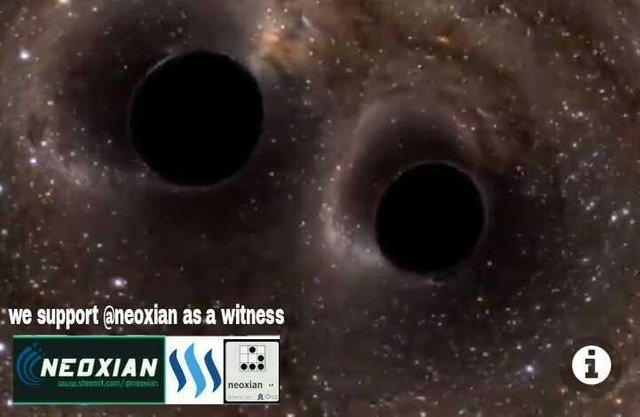When Two Giant Black Holes in the Universe Unite, That's how it reads | we support @neoxian as a witness
Objects in space often collide with one another. Black holes one of them.

Analyzing the wave data of the Gravient-Wave Observatory (LIGO) Laser Interferometer project researchers revealed the sound when two black holes coalesce.
Apparently, the sound is not blaring like a collision of two cars but just like a balloon that erupted.
The researchers managed to simulate the sound of the black hole's unity with the captured gravity-wave data.
In 2016, researchers from the LIGO project for the first time managed to capture the gravitational waves sourced from the union of two black holes.
The gravitational waves of the universe are very, very small when reaching the earth. However, researchers finally managed to separate it from "noise".
Researchers convert the waveform data into sound waves until it finally manages to get a sound estimate when two black holes merge.
According to researchers, studying abundant waves in space is not only useful for knowing the mysterious sound that may exist, but the beginning of the universe itself.
"One day, this technique allows us to see the gravitational waves of the Big Bang hidden behind the gravitational waves of black holes and neutron stars," said Eric Thrane, a researcher from Monash University in Melbourne, Australia.
The researchers plan to use the supercomputer to learn from the data that has been obtained.
They think their new method is 1,000 times more sensitive than the current technique. The researchers wrote the results of his research to Physical Review X.
Hmm so I'm like a black hole?